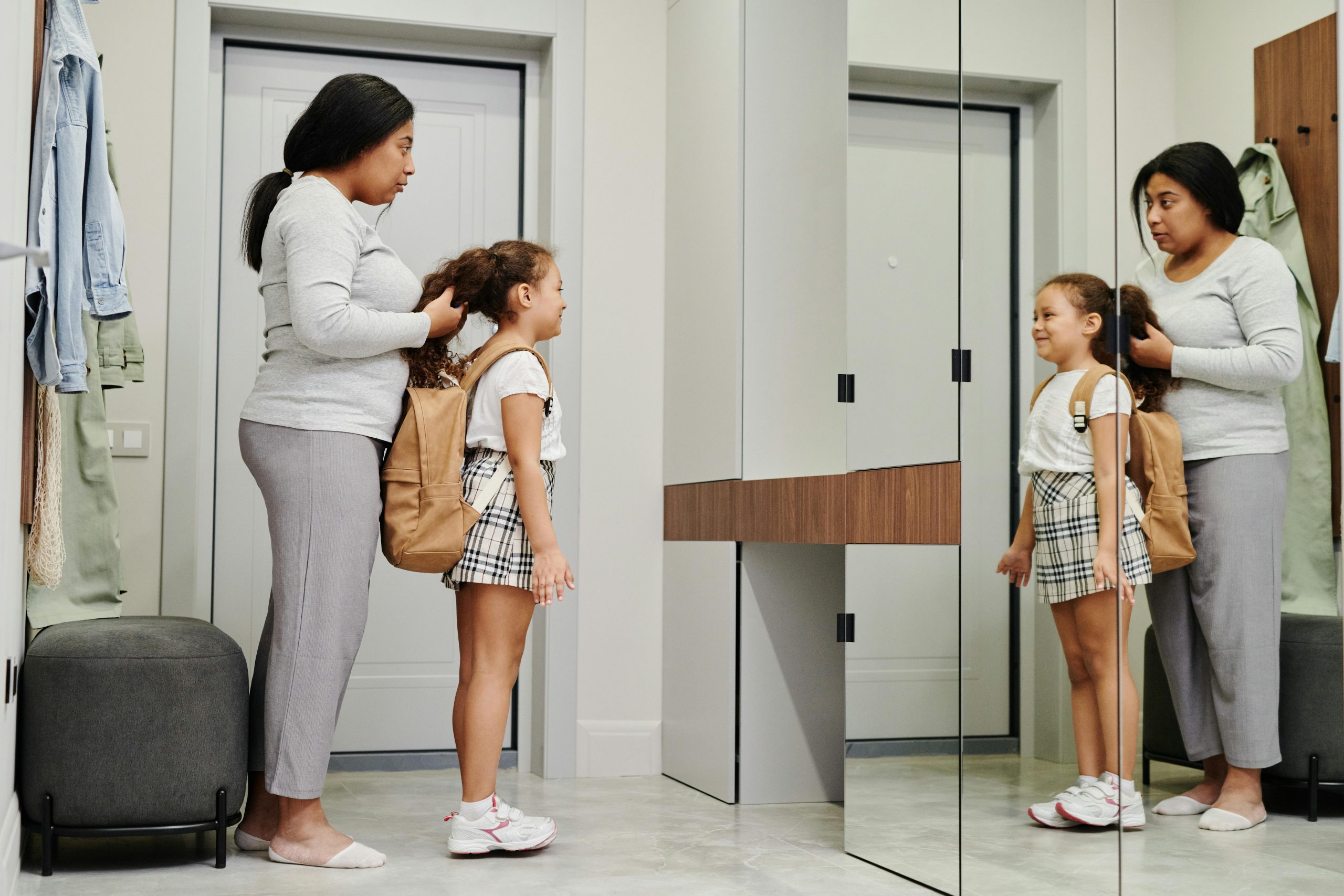Getting ready for school doesn’t have to be stressful. With the right routine, planning, and tools, both parents and kids can enjoy smooth mornings and successful school days. Whether it’s the first day of kindergarten or the start of a new year in middle school, preparation is key to starting strong and staying organized.
This guide will walk you through everything you need to know to get ready for school—from supplies and sleep routines to morning checklists and study habits. Let’s break it down so every day feels easier and more successful.
1. Build a Consistent Sleep Schedule

Getting enough sleep is one of the most important parts of school readiness. Children and teens need rest to focus, learn, and stay healthy.
Tips for Better Sleep:
- Set a consistent bedtime and wake-up time—even on weekends.
- Limit screen time 1 hour before bed.
- Create a relaxing bedtime routine like reading or taking a warm bath.
- Keep the bedroom quiet, cool, and dark for better sleep quality.
How Much Sleep Does Your Child Need?
- Ages 6–12: 9–12 hours per night
- Ages 13–18: 8–10 hours per night
Good sleep habits improve memory, mood, and school performance.
2. Organize School Supplies
Having the right school supplies helps kids feel prepared and ready to learn. Start by checking your school’s supply list, then go shopping together to gather what’s needed.
Common Supplies to Have Ready:
- Backpacks
- Notebooks and folders
- Pencils, pens, erasers
- Highlighters and markers
- Rulers and scissors
- Lunchboxes or snack containers
- Calculator (if needed)
Pro Tip: Use labels or permanent markers to write your child’s name on items to prevent them from getting lost.
Keeping supplies organized at home—like using bins or drawers—can also make it easier to find things during homework time.
3. Plan Outfits the Night Before
One of the biggest time-savers in the morning is having clothes picked out ahead of time. It reduces decision-making stress and keeps things moving.
What to Do:
- Choose clothes before bedtime and lay them out.
- Check the weather forecast to pick weather-appropriate outfits.
- Make sure shoes, socks, and accessories are ready too.
If your child wears a school uniform, check for clean pieces during the weekend to avoid last-minute laundry rushes.
4. Pack Lunches & Snacks Ahead of Time
Packing meals the night before saves time and makes mornings much easier.
Quick Lunch Ideas:
- Sandwiches or wraps
- Fruit slices or veggie sticks
- Cheese cubes or yogurt
- Whole grain crackers or pretzels
- Water bottles or 100% juice
Encourage your child to help with lunch prep. It teaches responsibility and ensures they’ll have foods they enjoy.
Don’t forget to check school rules about allergies and banned items like nuts.
5. Create a Morning Routine

A strong morning routine sets the tone for the entire day. It helps kids stay on track and reduces stress for everyone in the house.
Example Morning Routine:
- Wake up and make the bed
- Brush teeth and wash face
- Get dressed
- Eat a healthy breakfast
- Grab backpack and lunch
- Head out the door on time
Use a visual checklist for younger kids to follow along. Consider setting timers or alarms to stay on schedule.
6. Set Up a Homework Station
A quiet, clutter-free place for homework helps your child focus and stay organized.
Tips for a Good Homework Space:
- Use a small desk or table with good lighting.
- Keep pencils, paper, and other supplies nearby.
- Limit distractions like TV or loud music.
- Have a regular time each day for studying or reading.
If space is limited, a portable caddy with supplies can turn any table into a homework zone.
7. Practice School Routines Before the First Day
If your child is starting a new school, it can be helpful to practice school-related tasks before classes begin.
Try These Practice Activities:
- Walk or drive the route to school.
- Pack the backpack together and go over what’s inside.
- Review the school schedule or daily plan.
- Role-play getting in line, raising a hand, or asking for help.
These practice runs build confidence and reduce first-day jitters.
8. Encourage a Positive Mindset
Starting school can be exciting—but also a little scary. Talking openly about your child’s feelings and encouraging a positive outlook can make a big difference.
How to Support Your Child:
- Ask how they’re feeling and really listen.
- Share your own school memories—both good and bad.
- Focus on the fun parts: making friends, learning new things, playing at recess.
- Remind them it’s okay to ask questions or make mistakes.
A confident mindset helps kids bounce back from challenges and enjoy learning more.
9. Stay Connected with Teachers
Communication between parents and teachers helps support student success.
Ways to Stay Involved:
- Attend open houses or back-to-school nights.
- Read school newsletters and updates.
- Check homework planners or school apps regularly.
- Email or message the teacher if you have questions.
Let your child know that you and the teacher are on the same team, working together to help them do their best.
10. Keep Things Positive All Year Long
Back-to-school routines are important, but staying organized and motivated all year takes ongoing effort.
Keep the Momentum Going:
- Praise effort, not just grades.
- Celebrate small wins—like remembering homework or showing kindness.
- Adjust routines if something isn’t working.
- Make time for fun and relaxation too.
School success isn’t just about grades. It’s about growing, learning, and feeling good about yourself.
Managing School Anxiety in Kids
Not every child is excited about heading back to school. Some feel nervous, worried, or even scared—especially if they’re starting at a new school, switching grades, or have had tough experiences in the past. These feelings are normal and more common than many parents realize.
The most important thing you can do is talk to your child. Ask open-ended questions and listen without interrupting. Reassure them that it’s okay to be nervous and that many other kids feel the same way. Let them know you’re there to help and support them.
You can also take small steps to ease their fears before the first day:
- Visit the school: Walk around the building, check out the classroom, and even meet the teacher if possible.
- Practice the routine: Try out the new morning schedule a few days early so it feels familiar.
- Create a calm home environment: Keep mornings peaceful and avoid rushing.
- Validate their feelings: Let them know it’s okay to feel unsure, and remind them they’ve handled new situations before.
- Use books or stories: Read together about characters who feel nervous about school to normalize the experience.
With patience and encouragement, your child can start the school year with more confidence and less stress.
Balancing Screen Time and Study Time
After a long summer filled with video games, TV shows, and mobile apps, getting kids back into a study routine can be challenging. Too much screen time can make it harder for them to focus on homework and fall asleep on time. As the school year approaches, it’s important to reset those habits.
Start by cutting back on screen use gradually—don’t make it an overnight change. Talk to your child about why it’s important and involve them in setting limits. Help them understand that screen time isn’t bad, but it needs to be balanced with school responsibilities and healthy activities.
Here are a few ways to make the transition smoother:
- Set daily limits: Decide how much screen time is allowed during school days vs. weekends.
- Create a homework-first rule: Make sure all schoolwork is finished before any screen time.
- Establish screen-free zones: Keep bedrooms, dining tables, and homework spaces device-free.
- Offer fun alternatives: Suggest reading, puzzles, drawing, board games, or outdoor play.
- Use parental controls: Help manage time and content using built-in settings on devices.
When kids have a clear routine and fun, screen-free options, they’re more likely to stay focused—and less likely to fight the new rules.
Setting Up a Study Space at Home
Having a dedicated study space at home can make a big difference in how well kids focus and complete their homework. A quiet, organized area helps minimize distractions and sets the tone for learning. It doesn’t need to be fancy—even a small desk in a quiet corner can work well.
Choose a spot with good lighting, away from noisy areas like the TV or kitchen. Make sure the chair and desk are comfortable and the space is free from clutter. Keeping it consistent—using the same area for studying every day—helps build good habits.
Here are some tips to create a kid-friendly study zone:
- Pick a quiet location: Avoid high-traffic areas to help your child focus.
- Use good lighting: Natural light is ideal, but a desk lamp works too.
- Stock essential supplies: Include pencils, pens, paper, rulers, a calculator, and any other needed tools.
- Add a calendar or planner: Help your child keep track of assignments, tests, and reading goals.
- Let them personalize it: Let your child add a favorite photo, stickers, or a fun pencil holder to make the space feel like their own.
A well-set-up study space shows kids that schoolwork matters—and that you support their learning every step of the way.
Final Thoughts
Getting ready for school is about more than just setting alarms and packing lunches. It’s about creating habits, building confidence, and setting the tone for a successful school year. With the right routines and mindset, you can help your child feel prepared and excited to take on each day.
Start with the basics—sleep, supplies, and structure—then build from there. Talk with your child, stay flexible, and focus on what works for your family. Whether it’s the first day of school or just another Monday, being prepared makes everything a little easier—and a lot more enjoyable.
